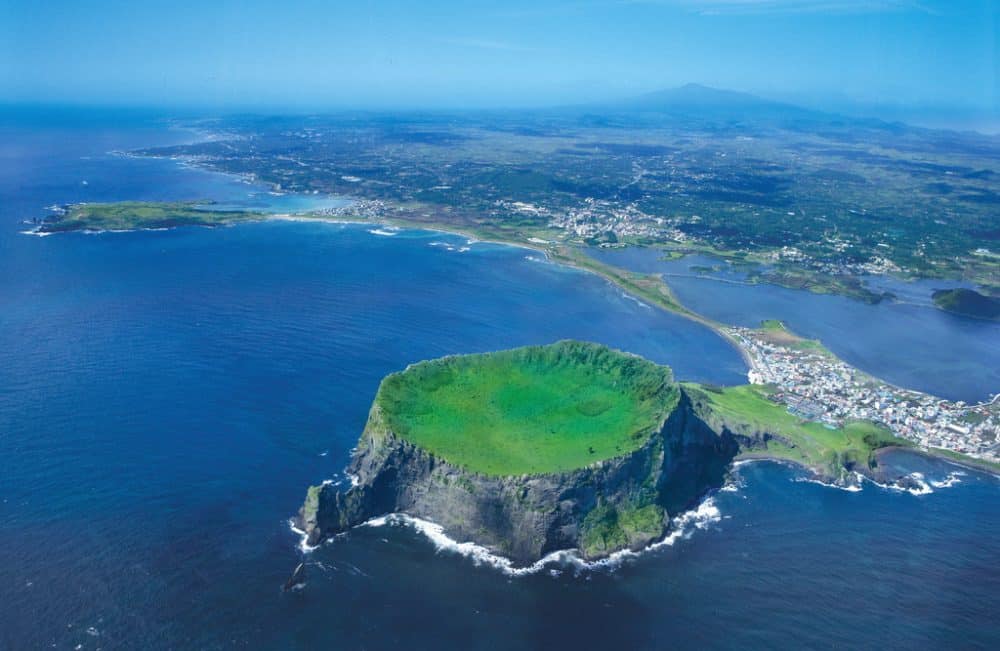
Explore South Korea’s famous volcanic Jeju island with Magnificent Waterfalls
By Kayla McMillan

Jeju Island, located southwest of the Korean Peninsula, is the Republic of Korea’s largest island. Jeju is a world-famous volcanic island with more than 90% of its total area covered in basalt.
This resort island has magnificent views of nature and plenty of entertaining excursions for solo travelers, families, and couples alike.
Jeju is a small island, only 73 km east and west, 31 km north and south, with the famous Hallasan Mountain in the center. The whole island is Jeju Province.
Jeju Island is home to 77 types of mammals, 198 species of birds, among other animals. The island has a recorded total of 2,001 types of distributed sub-tropical, temperate, and polar vegetation.
Jeju is a world-renowned treasure island worthy of worldwide attention. In November 2011, Jeju Island was voted onto The New Seven Wonders of the World which includes the Amazon Rainforest, Komodo Island, Table Mountain, and more.
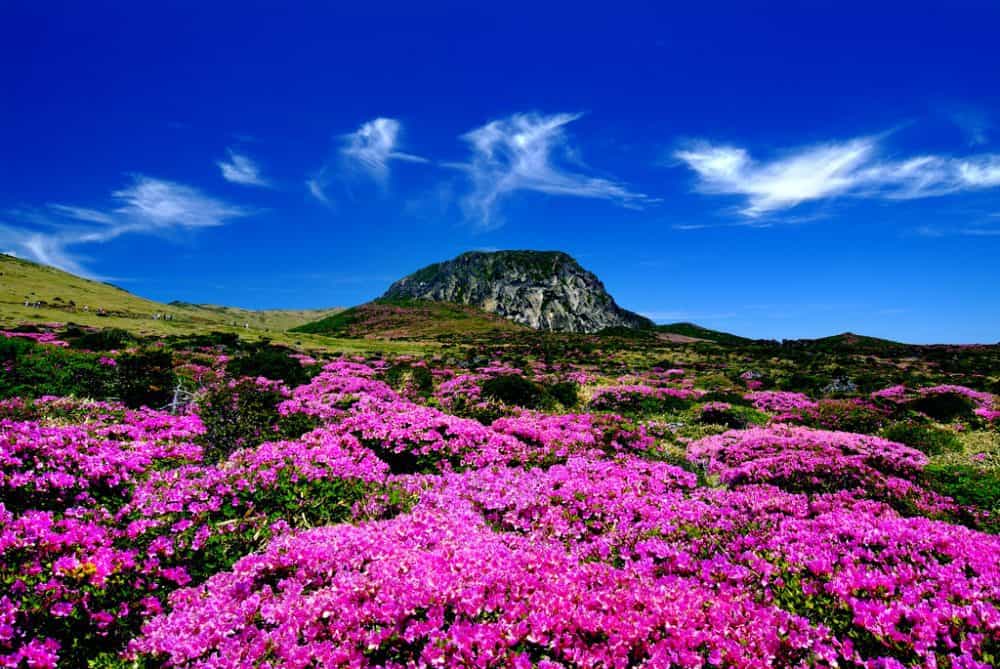
Additionally, it won UNESCO-accredited titles such as Biosphere Reserve, World Natural Heritage, and the Global Geopark award.
Places to Explore on Jeju Island
Mount Hallasan
Climb Korea’s highest mountain located in the center of Jeju Island. Mount Hallasan is a dormant volcano that is listed as a UNESCO World Natural Heritage site. It’s 6,398′ high.
Despite its high altitude, it’s quite an easy climb; most people can make it to the peak and back down within a day. From its peak, hikers are rewarded with a huge beautiful crater lake in addition to its breathtaking views of Jeju.
Even if you’re not interested in hiking to the peak, Mount Hallasan offers seven scenic trails, each less than six miles. For nature lovers, there are nearly 6,000 species of plants and animals in the area.
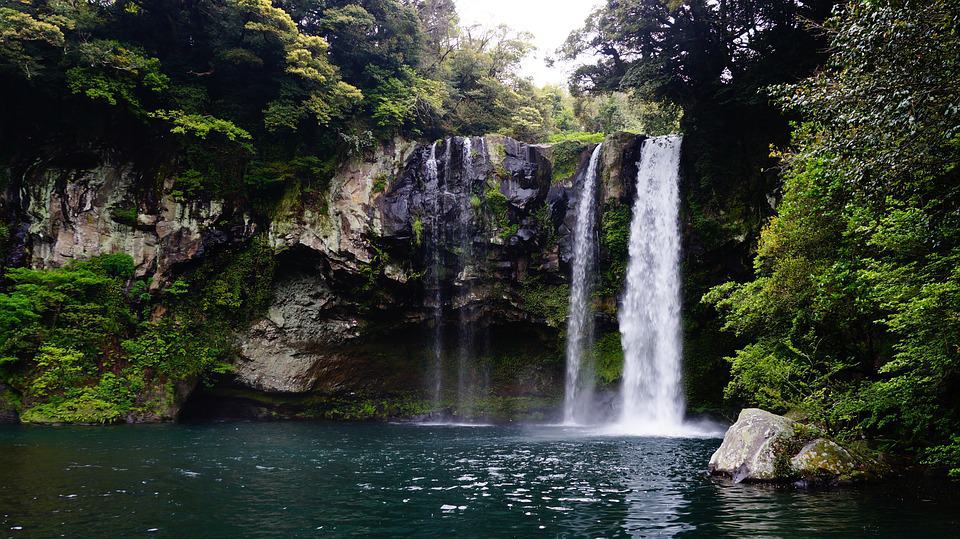
Cheonjeyeon Waterfall
Jeju is the perfect paradise for nature lovers, filled with beautiful beaches, complex rock formations, and breathtaking waterfalls.
Also known as the Pond of God, Cheonjeyeon Waterfall begins from the ceiling of a cave where it falls into three sections.
The first waterfall parts to produce the second and third where it all flows together into the sea. Around these incredible falls, unique plants and flowers grow.
You can even find the rare and unique Solipnan reeds and Skeleton fork ferns. In the month of May, Jeju holds a Chilseonyeo Festival where many gather to swim in the falls.
Seonimgyo Bridge
Reaching over the Cheonjeyeon Waterfall, Seonimgyo Bridge has seven nymphs carved on both sides. These nymphs symbolize the seven beautiful and legendary nymphs that would descend from heaven at night. The Chilseonyeo Festival in May celebrates the coming of the nymphs, and tourists can bathe in the falls.
The bridge is also the first arch bridge in the region.
Jeongbang Falls
Jeongbang Falls is the only waterfall in all of Asia that falls directly into the ocean. Situated at a high cliff by the sea it’s one of the most famous waterfalls to visit on Jeju Island.
The wall of the waterfall is inscribed with the words “Seobulgwacha”, which refers to Seobul, a servant of the Chinese Emperor Jin, who once passed by this incredible wonder. Many visitors walk down to the rocky coast where fresh catch from the sea is sold.
For a unique Jeju experience, take the time to enjoy some raw sea urchin sashimi from these sellers before you hike back up the waterfall.
Jusangjeolli Cliff
When Mount Hallasan erupted into the Jungmun Sea, its lava suddenly cooled, shrinking in mass, forming the many cube-like blackish rock pillars that are known as the Jusangjeolli Cliff. It was formed over hundreds of thousands of years ago.
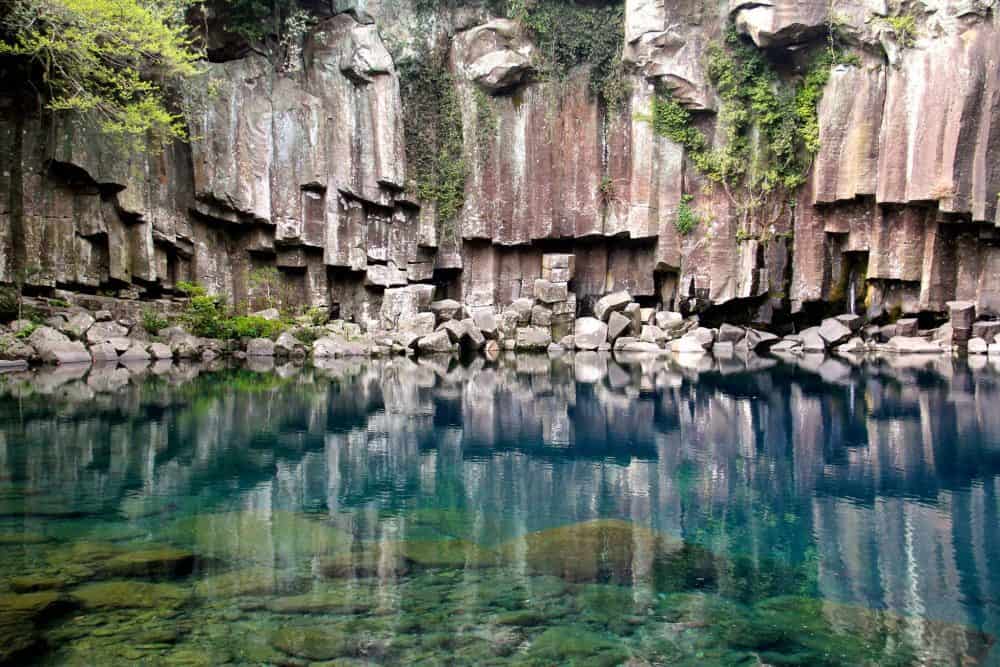
The formation looks like a piece of art that has been sculpted delicately with a sharp tool. This site is a wonder of nature, where hexagonal rock pillars stack on top of each other perfectly.
Seongsan Ilchulbong
Known as Sunrise Peak to non-Korean-speaking tourists, Seongsan Ilchulbong is famed for its picturesque sunrise scenic views one can enjoy at the peak. With 99 rocks surrounding it at the top, the UNESCO World Heritage Site looks like a giant fortress.
Seongsan Ilchubong is an extinct volcano with a huge crater at the top. It rose from the sea more than 100,000 years ago in a series of volcanic eruptions and is now connected by a ridge that is great for walking and horse-riding to the nearby Seongsan Village.
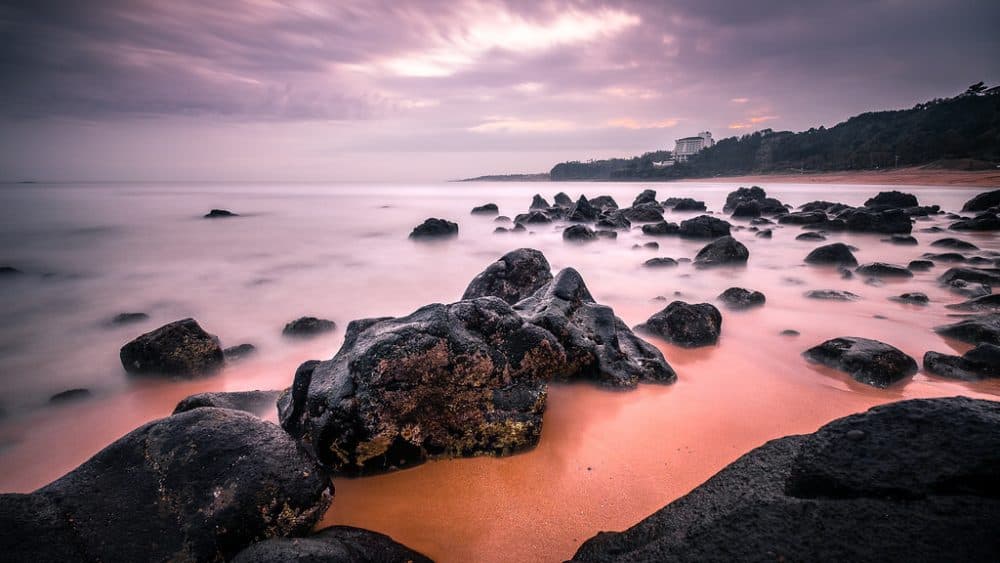
Surfing Jungmun Beach Waves
Jungmun Beach is best known for its huge waves, making it a favorite spot for Korea’s surfers. Once a year, surfers come together at Jungmun Beach to take part in the Jeju International Surfing Competition.
The white-sand beach that diffuses a variety of colors including black, red, white, and gray is also called Jinmosal for its curvy shape like a bow, making a unique complement to the island’s black Hyeonmuam stones.
Manjanggul Cave
Many travelers from near and far explore the Manjanggul cave, one of the finest and longest lava tunnels in the world.
Formed more than 2.5 million years ago, Manjanggul Cave houses a variety of natural formations such as 70 cm long lava stalagmites and the lava tube tunnels, made all the more eerily magical by the soft colored lights that illuminate them.
To add to this amazing excursion, you might also find the bats living in the caves; take a listen for their flapping sounds. Although the entire cave’s length is more than eight miles, only about a half-mile of it is open for tourists to explore.
Jeju Waterworld
For a break from all the hiking of Jeju Island, kick back and relax at Jeju Waterworld, where herb saunas and Jiujiang (Korean bathhouses) are sure to ease your aching muscles. There’s also a Samda Water Tangerine Spa, whose waters contain the extract of Jejus’ local tangerines and are purported to be able to keep one from cold sclerosis and hyperpiesia.
This is also a great place to bring the kids; children can play in the water park within the premises. Have fun in the man-made Wave Pool or take a ride down the water slides! During the months of July and August, Jeju Waterworld celebrates its Herb and Mud Festival with mud baths, herb and mud massages, mudslides, and mud Korean wrestling.
Museums on Jeju Island
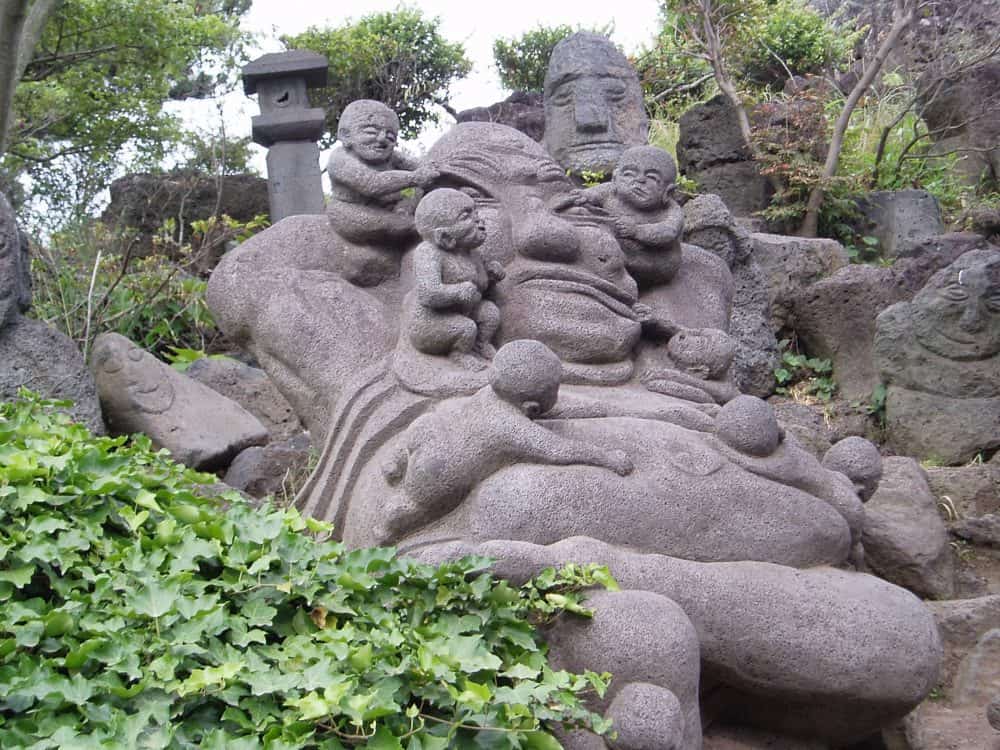
Jeju Island is filled with unique museums to explore. From Glass Castles to Teddy Bears, there’s plenty of knowledge to be soaked up during your stay on the island. Take a look at some of the different museums Jeju has to offer.
Jeju Folk Village Museum
Travel back in time to the 1890s by visiting the Jeju Folk Village Museum. Over 100 traditional houses and 8,000 folk artifacts are included in this cultural village for an educational immersion.
There are four villages on the museum’s grounds: Mountain Village, Hill-Country Village, Fishing Village, and Shamanism Village.
Other exhibitions showcase the artifacts used in farming and fishing, as well as folk performances.
Admire the wonders of traditional wood carvings, get your fortune read at the Fortune Teller’s house, and make patjuk (red bean porridge) during the Dongji (Winter Solstice). There are plenty of unique experiences to enjoy at the Jeju Folk Village Museum. You can also save money by showing your Korean Airlines boarding pass for discounts at this attraction.
O’Sulloc Tea Museum

Korea is known for its strong tea culture, and the O’Sulloc Museum is the perfect place to learn more about the different teas Korea has to offer. ‘O’ in O’Sulloc means to appreciate and enjoy, while ‘Sulloc’ refers to a type of green tea.
The museum takes the shape of a teacup and is separated into at least 6 different exhibitions. Take some time to learn about the different teas of Korea and around the world.
Visitors can learn how to categorize tea leaves based on various factors, witness the green tea fields in the distance, and enjoy a hot cup of tea by the lotus pond.
Teddy Bear Museum
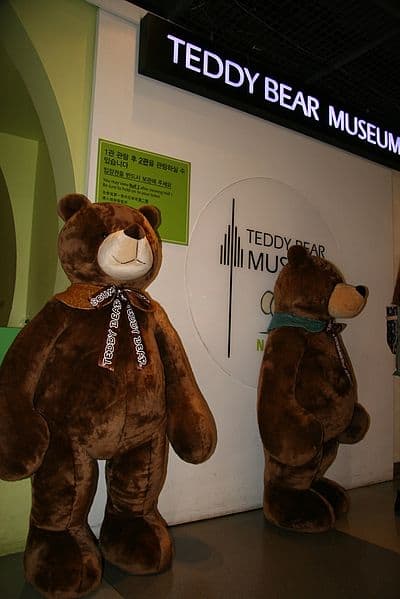
One of the most well-known museums in Korea is the Teddy Bear Museum. This unique visit displays thousands of teddy bears from all over the world. Some of these bears have even been designed and created by hand!
Walk through the history of teddy bears in the History Hall, where you can find bear versions of famous historical figures such as the Mona Lisa. In the art hall, you can marvel at the latest artworks and animated characters.
The museum also holds the world’s smallest teddy bear, measuring just 4.55mm. Enjoy a nice walk by the garden while hanging out with huge teddy bear sculptures over tea. The Teddy Bear Museum is definitely a must-see for families.
Jeju Glass Castle/Museum
This delicate collection of glasswork is divided into indoor and outdoor sections, each with its own variety of unique glass. The exterior garden features naturalistic installations such as a glass waterfall, glass flowerbeds, and a lake made of mirrors with fish constructed out of used soju (popular Korean alcohol) bottles.
Inside, exhibitions include a towering green glass beanstalk, a room full of mirrors to get lost in, and even a glass bookshelf with glass books. For an extra fee, visitors can even experience making their own glass creations.

Alive Museum
If you love to make funny poses when taking pictures with your friends, then Alive Museum is for you! This trick art museum offers a large collection of optical illusions and 3D art.
It’s divided into different exhibits for all different explorations! There are rooms where you can ride a bull, become a living doll, be an artist’s masterpiece, and so much more.
After exploring the main part of the museum, rest at the cafe which has a large collection of candy. After exiting the cafe, visitors will be led to the outdoor exhibit filled with sculptures for you to pose with. This is a great place for children to explore the wonders of optical illusions.
Gimnyeong Maze Park
This popular maze is great for adults and children alike! Created by Fred Dunstin from over 2,000 Leyland cypress trees, this maze creates a whole day of exploration and discovery. Gimnyeong Maze Park contains a maze that has various images incorporated in it.

The maze is in the shape of Jeju Island, and its images can clearly be seen from above including a serpent which was an object of worship on the island, horses of Jeju Island, a ship, the Sparrowhawk that was shipwrecked in 1653, and dolmens that are relics from the Bronze Age. All of these images are famous symbols or landmarks of Jeju Island.
Popular Photo Sites
There are three skywalks and an observatory, which are popular photo sites for tourists. They offer panoramic views of the entire maze. There are four different ways to get through the maze from the entrance.
If you use a map, it will take only 5 minutes, but without a map, it’s a bit more difficult and can take up to 20 minutes. Some visitors have been known to spend up to 50 minutes lost in the maze before giving up and calling for help!
Inside the maze, there are many boards with heart-warming quotes written on them. One quote says, “When you run into someone three times, that person feels like your friend.” In this unique maze, you might actually make more friends than you expect!
Other museums to take a look at during your time on the island include the Da Vinci Museum, Chocolate Museum, and the Jeju Mini-Mini Land.
Outdoor Adventures on Jeju Island
There are plenty of outdoor activities to do for nature lovers! From ziplining to ATV tours, there’s something for everyone to enjoy.
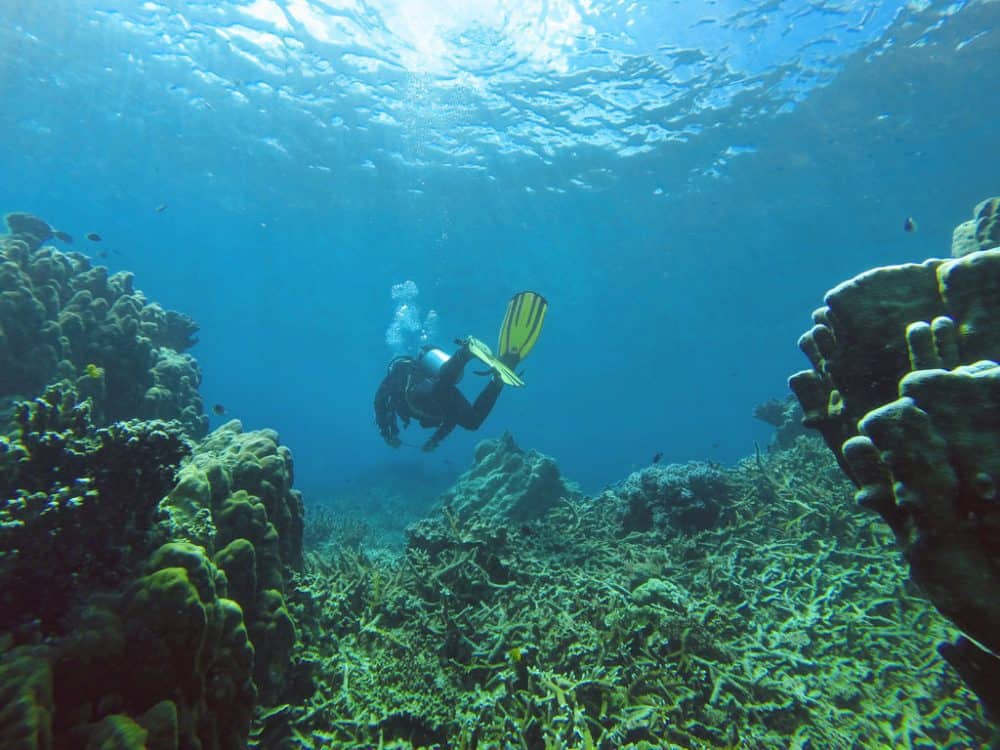
Scuba Diving
The area around Munseom (Mosquito Islet) and Beomseom (Tiger Islet) are perfect places to go scuba diving because the sea maintains a temperature of 20 degrees year-round and offers beautiful underwater views.
Submarine Tours
Exploring the sea of Jeju by a submarine is the only way to see shipwrecks and the scenery 40 meters under the sea.
This course should not be missed, as the underwater photography of this volcanic island’s scenic seabed with the most memorable Seogwipo Submarine Experience.
Submerge more than 131 feet underwater aboard their submarine while discovering diverse marine life and spectacular coral reefs.
Feel the thrill as you descend below the sea surface to begin your undersea exploration. Look out for shipwrecks, colorful tropical fish, and exotic sea plants.
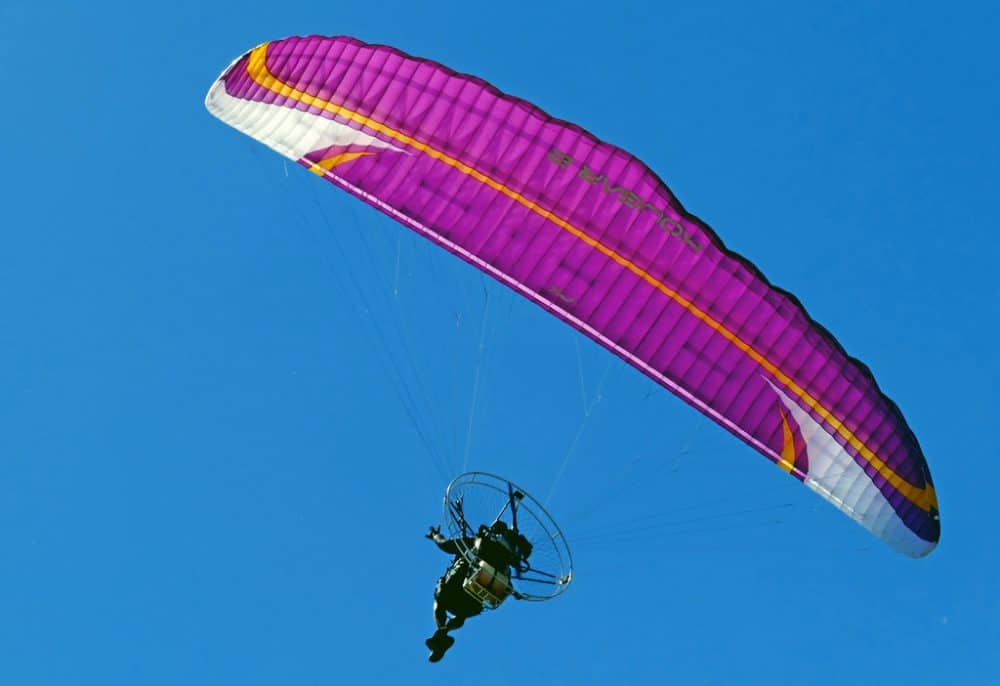
Paragliding
Jeju Island is famous for its beautiful landscape scenery and paragliding is the perfect outdoor activity to take in a 360-degree view of this wonderful island.
During your experience, paragliding experts will choose the best place with good wind conditions to take you on an unforgettable ride.
Quick Tips to Keep in Mind to Visit Jeju Island
Currency: South Korean Won
City Tours: Visitors can pick up tickets after boarding any of the buses at each stop (they accept cash, credit card, and transportation card). Service hours are from 9:00 am – 7:00 pm.
Transportation: City and intercity buses are the main transportation means to travel around the island. Taxis are also available. There are no subways or trains in Jeju.
Individual travelers typically prefer to rent a car. Car rental operators are widely available around Jeju International Airport and Jeju International Ferry Terminal.
Tourism: July and August are the high seasons.
COVID Times in South Korea
- Discover Cambodia: Lavender Jeep Style - May 22, 2019
- Inside the Prison that Once Jailed Nelson Mandela - May 17, 2019
- Jeju Island Korea: the Beautiful Island of the Gods - May 14, 2019


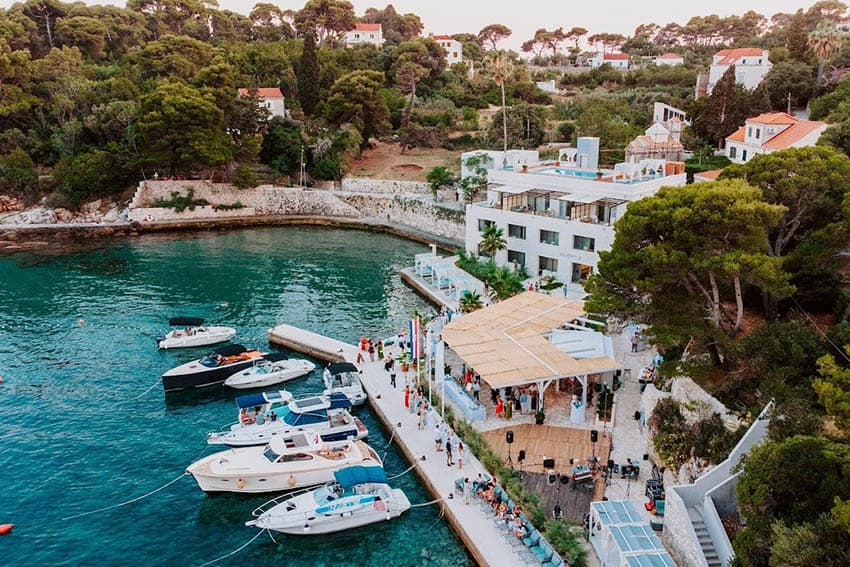
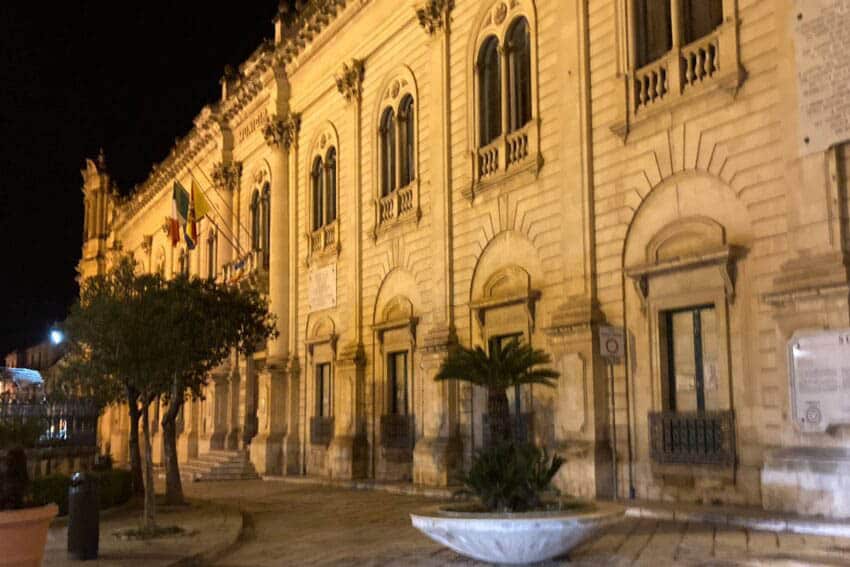
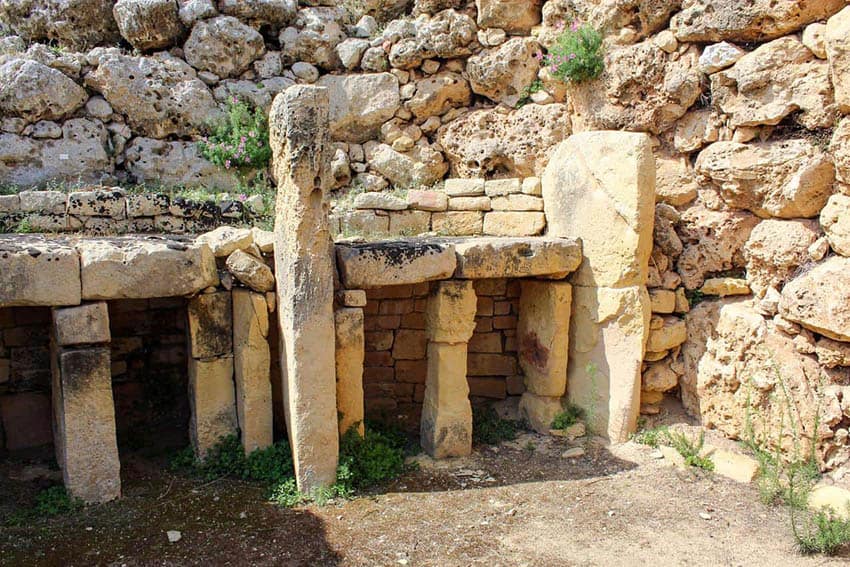

That is a good tip especially to those new to the blogosphere.
Short but very precise info… Thank you for sharing this one.
A must read article!
Do you have any video of that? I’d love to find
out some additional information.